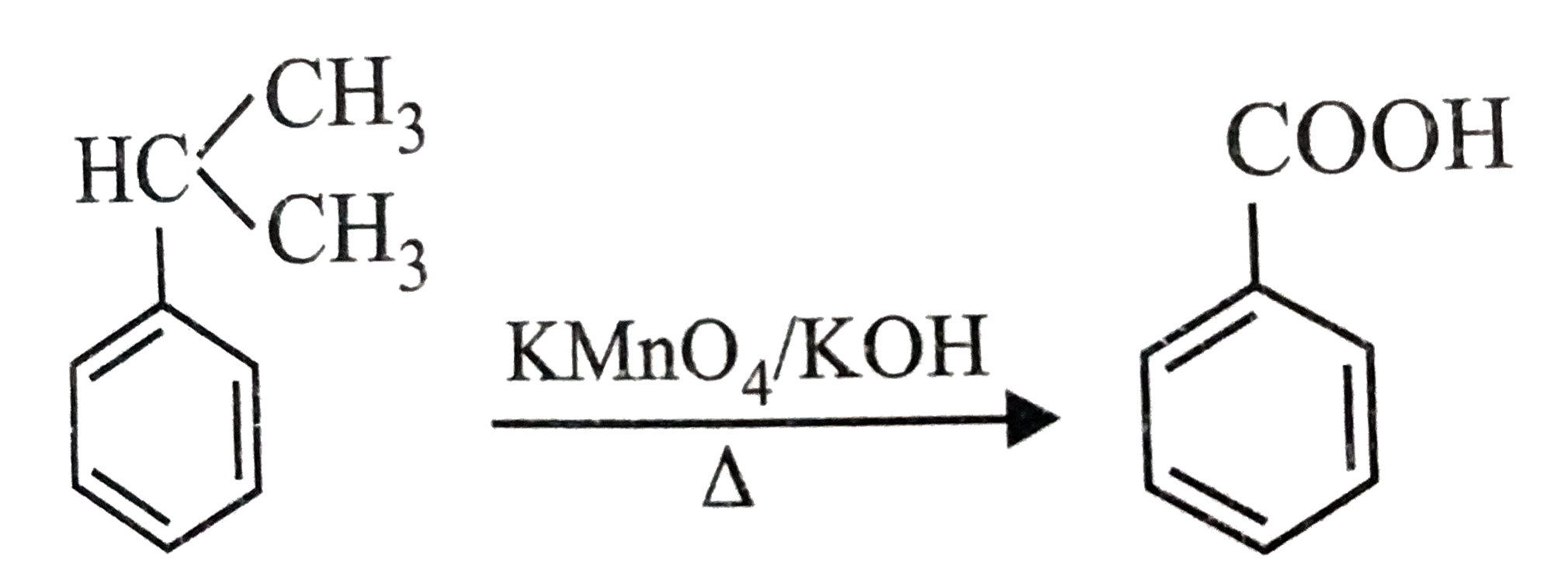In which of the following case, does the reaction go farthest to completion ?
K=102
K=10−2
K=10
K=1
The correct Answer is:A
To determine in which case the reaction goes farthest to completion, we need to analyze the given equilibrium constants (K) for each option. The equilibrium constant is a measure of the ratio of the concentrations of products to reactants at equilibrium. A higher value of K indicates that the reaction favors the formation of products, meaning it goes farther to completion.
1. Identify the Options:
- Option 1: K = 10²
- Option 2: K = 10⁻²
- Option 3: K = 10
- Option 4: K = 1
2. Understand the Significance of K:
- The equilibrium constant (K) is defined as:
K=(Products)(Reactants)
- A higher K value indicates a greater concentration of products at equilibrium, suggesting that the reaction proceeds further toward completion.
3. Compare the Values of K:
- Option 1: K = 10² = 100
- Option 2: K = 10⁻² = 0.01
- Option 3: K = 10 = 10
- Option 4: K = 1 = 1
4. Determine Which K is Highest:
- Among the options, K = 100 (Option 1) is the highest value.
- The order of K from highest to lowest is:
- Option 1 (K = 100) > Option 3 (K = 10) > Option 4 (K = 1) > Option 2 (K = 0.01)
5. Conclusion:
- Since a higher K value indicates that the reaction goes farther to completion, we conclude that the reaction with K = 10² (Option 1) goes farthest to completion.
Final Answer:
The reaction goes farthest to completion in Option 1: K = 10².
---
- Option 1: K = 10²
- Option 2: K = 10⁻²
- Option 3: K = 10
- Option 4: K = 1
- The equilibrium constant (K) is defined as:
K=(Products)(Reactants)
- A higher K value indicates a greater concentration of products at equilibrium, suggesting that the reaction proceeds further toward completion.
- Option 1: K = 10² = 100
- Option 2: K = 10⁻² = 0.01
- Option 3: K = 10 = 10
- Option 4: K = 1 = 1
- Among the options, K = 100 (Option 1) is the highest value.
- The order of K from highest to lowest is:
- Option 1 (K = 100) > Option 3 (K = 10) > Option 4 (K = 1) > Option 2 (K = 0.01)
- Since a higher K value indicates that the reaction goes farther to completion, we conclude that the reaction with K = 10² (Option 1) goes farthest to completion.
The reaction goes farthest to completion in Option 1: K = 10².
Topper's Solved these Questions
- BOOK - ICSECHAPTER - EQUILIBRIUM EXERCISE - TRUE OR FALSE TYPE QUESTION22videos
EQUILIBRIUM
- BOOK - ICSECHAPTER - EQUILIBRIUM EXERCISE - FILL IN THE BLANKS TYPE QUESTIONS34videos
EQUILIBRIUM
- BOOK - ICSECHAPTER - EQUILIBRIUM EXERCISE - ESSAY (LONG ANSWER) TYPE QUESTIONS17videos
EQUILIBRIUM
- BOOK - ICSECHAPTER - ENVIRONMENTAL CHEMISTRY EXERCISE - NCERT TEXT-BOOK EXERCISE20videos
ENVIRONMENTAL CHEMISTRY
- BOOK - ICSECHAPTER - HYDROCARBONS EXERCISE - NCERT TEXT-BOOK EXERCISES46videos
HYDROCARBONS
Similar Questions
For which of the following cases does the reaction go farthest to completion K=1,k=1010,K=1−10 ?
View Solutiona. For which of the following reactions, Kp is equal to Kc ?
i. H2+I2⇔2HI
ii. N2+3H2⇔2NH3
iii. PCl5⇔PCl3+Cl2
b. For which of the following cases does the reaction go garthest to completion:
K=1,K=1010,K=10−10?View Solution
Knowledge Check
- Question 1 - Select One
Which of the following reactions does not occur ?
A B
B C
C D
D
In which of the following does the reaction go almost to completion?
View SolutionIn which of the following does the reaction go almost to completion ?
View SolutionIn which of the following does the reaction go almost to completion ?
View SolutionIn which case does the reaction go farthest to completion: K=1,K=10−10, and why?
View SolutionIn which of following cases does the substance change?
View SolutionWhich of the following does not give lodoform reaction ?
View SolutionWhich of the following equilibria will proceed to farthest completion?
View Solution

